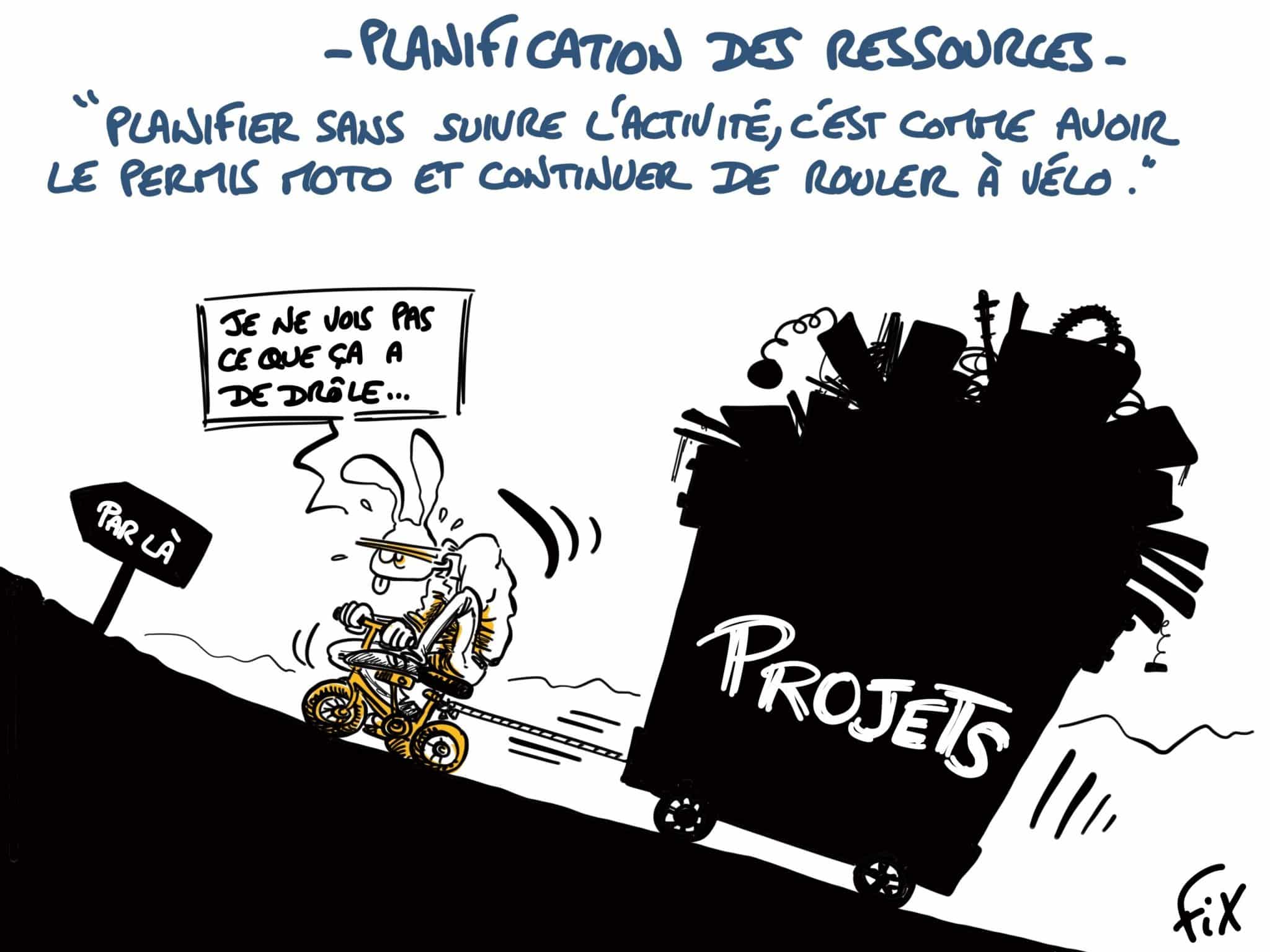Resource planning: 3 PMOs share their views
Whether a CIO project involves 20 or 150 employees, resource planning is a key process. Why plan resources? How and who to plan? 3 management experts, 3 PMOs reveal their challenges projects and their methods for planning their teams.
challenges for project resource planning
If there's one subject on which all three of our experts agree, it's resource planning to answer the question "Can we get this new project off the ground? After all, all IT Departments receive far more project requests than they have the capacity to carry out. Arbitrating between projects and team availability is criterion number 1.
"Planning means managing the scarcity of resources" Sylvain Crinquand, KUHN deputy CIO
Historically, Kuhn focused on quality at the best cost, with a tolerance on lead times. Macro-planning of projects was favored. Since the arrival of the "big" ERP project* - involving a substantial number of external resources - this philosophy has been called into question. Because the slightest deviation from deadlines is costly. Tolerance of deadlines is questionable. And the arbitration cursors are shifting. How can projects of different sizes and cultures coexist?
The Eurométropole de Strasbourg , on the other hand, is faced with a large number of pending projects. Their strategy has led them to opt for fine-tuned, exhaustive planning of current projects. Go? No Go? Annual arbitration is based on 3 criteria:
- Project costs
- The resource burden
- Project value analysis rating
As for VYV3's GIE**, resource planning enables precise monitoring of the progress of the annual workload plan in line with the strategic roadmap. Having near-real-time visibility on resources, their availability and allocation, enables arbitration on new requests. And as the workload follows a growth trend, and resources become scarce, it's time for recruitment; one of VYV3's current challenges is to increase its capacity to take on projects. This challenge is underpinned by detailed knowledge of capacity schedule.
*ERP: Enterprise Resource Planning (also known as PGI -Progiciel de Gestion Intégré-)
*GIE: Economic Interest Grouping
The planning challenge: multiple projects
"The point of CIO is to make the business understand that an IT project consumes a lot of business work. This is a reality. You have to make yourself available to the project owner.
On this point, everyone agrees: business managers often consider an IT project to be inexpensive. And yet, business resources are essential to the project's success! In fact, it's a typical feature of IT projects that a project manager manages several projects in parallel.
An MCO for every project
Schematically speaking, the activity of a CIO is 50% project and 50% MCO - Maintenance in Operational Condition .The challenge of planning is twofold: to cope with an increasing BUILD, while guaranteeing RUN. Finding the right balance is the art of PMO. Without balance: more resources, more projects, higher costs, and even greater technical debt. Organizational choices to specialize teams for projects and other resources for RUN depend on the size of CIO. Versatility seems to be the order of the day for small teams, while specialization is more common in larger ones. Whatever the choice, behind every project, there is an MCO load... to be planned!
Insourcing or outsourcing for better IS financial control? The "make or buy" rationale is put to rest thanks to exhaustive planning.
A key factor in the success of a project, planning provides access to "Ability to do", and thus answers the question: "Can we launch a new project? With what room for manoeuvre?"
From project idea to MCO, Project Monitor is the tool that accompanies you. It's a simple, comprehensive PPM management software that supports your governance at every stage.
"The challenges of cost and time vary from one organization to another. Project Monitor allows each company to find the fineness of its grain."
Different approaches, depending on the maturity of the structure
Kuhn has defined a quota above which an assignment is considered a project. From 5 man-days upwards, we call it a "project". Today, some forty projects are active.
In the boardroom for some, in the steering committee for others: resources are planned! Human, material, financial, temporal... At this stage, at the start of the project, macro-planning is favored.
First by the month, with a different level of breakdown depending on the degree of planning by the project managers (at the root of the project or by phases).
This is then refined over time during the implementation phase.
Gradually, we move from generic planning (skills, roles) to individual planning.
Every month, particularly at VYV3, reviews of intentions introduce any new requirements into the workload plan.
The PMO then ensures that workload schedules are kept on track. We arbitrate and adjust costs and deadlines if necessary to ensure project coordination and feasibility.
The "planning effect": a maximum deviation of 10-15% between planned and actual results
A 10-15% gap between what was planned and what was actually achieved... that's what Strasbourg's Eurometropole found when it carried out its annual project reviews! The secret? Abacuses and quarterly project portfolio planning. Built up over the years, the abacuses provide project managers with an accurate estimate of the overall project workload. As for project reviews, they provide an opportunity to re-balance workloads and budgets.
"We have 3 large portfolios, linked to our 3 account managers. We spend 3 hours per project manager, i.e. 9h project review meetings per quarter." Franck Barbi, Steering and Coordination Manager CIO Strasbourg Eurométropole
This diversity of uses depends on the maturity and size of the structure. It is around this reality that the progressive planning of Project Monitor is conceived. The Capacity Plan provides managers with an overview of actual and forecast workloads. Objective: anticipate overloading (or even underloading).
With Project Monitor, it's possible to work at a very macro level at the outset. You can then drill down to finer and finer levels of granularity, depending on your needs and objectives.
"Collaboration with the VIRAGE teams on planning expectations has been rich. Can't wait to follow the implementation as it will simplify the life of project managers!" Franck Barbi
"We have regular exchanges with the product team. We really appreciate that. All the work has been designed with simplicity in mind. We can't wait to apply it at Kuhn." Sylvain Crinquand
5 planning tips from our experts?
- Estimate the resources required for the project using the abacuses.
- At the start of a project, favour macro-planning, at the root of the project or in phases
- During the realization phase and thanks to exhaustive resource tracking, refine planning
- Regularly measure the gap between planned and actual to adjust if necessary. Take the necessary decisions to achieve objectives.
- Feedback and drawing the right conclusions.
Planning is THE starting point for decision-making. From operational to strategic, there are many challenges . Among them, the launch of new projects.

